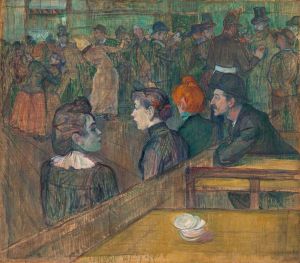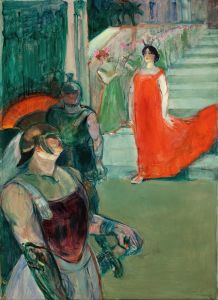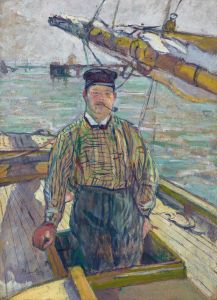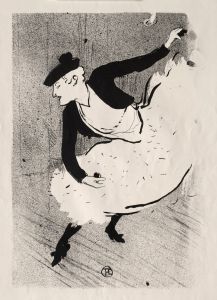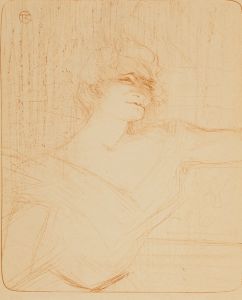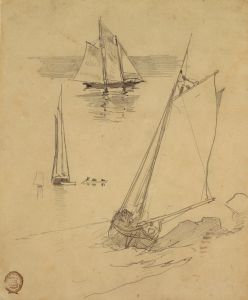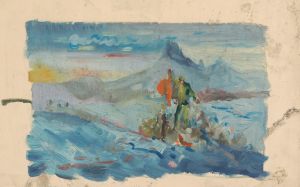
Au pied du Sinaï – Front Cover
A hand-painted replica of Henri de Toulouse-Lautrec’s masterpiece Au pied du Sinaï – Front Cover, meticulously crafted by professional artists to capture the true essence of the original. Each piece is created with museum-quality canvas and rare mineral pigments, carefully painted by experienced artists with delicate brushstrokes and rich, layered colors to perfectly recreate the texture of the original artwork. Unlike machine-printed reproductions, this hand-painted version brings the painting to life, infused with the artist’s emotions and skill in every stroke. Whether for personal collection or home decoration, it instantly elevates the artistic atmosphere of any space.
Henri de Toulouse-Lautrec, a prominent French painter and illustrator, is renowned for his depictions of the bohemian lifestyle in late 19th-century Paris. One of his lesser-known works is the front cover illustration for "Au pied du Sinaï," a book by the French writer and playwright Alphonse Daudet. This work is an example of Toulouse-Lautrec's contribution to the world of book illustration, a field in which he applied his distinctive artistic style.
"Au pied du Sinaï" is a collection of short stories by Daudet, first published in 1898. The stories are set in the Jewish community of Algiers and explore themes of faith, tradition, and cultural identity. Toulouse-Lautrec's involvement in the project highlights his versatility as an artist and his ability to adapt his style to different media and subjects.
The front cover created by Toulouse-Lautrec for "Au pied du Sinaï" reflects his characteristic use of bold lines and striking compositions. While specific details about the illustration are scarce, it is known that Toulouse-Lautrec's work often featured expressive figures and a keen attention to the nuances of human emotion and interaction. His illustrations typically captured the essence of the subject matter, providing a visual entry point into the themes explored within the text.
Toulouse-Lautrec's artistic career was marked by his innovative approach to capturing the vibrancy of Parisian nightlife, particularly in the Montmartre district. He is best known for his posters and paintings of cabaret performers, dancers, and the patrons of the Moulin Rouge. His work in book illustration, including the cover for "Au pied du Sinaï," demonstrates his ability to extend his artistic vision beyond the canvas and into the realm of literary art.
The collaboration between Toulouse-Lautrec and Daudet is an example of the intersection between visual art and literature during the Belle Époque, a period characterized by cultural flourishing in France. Artists and writers of this era often collaborated to create works that were both visually and intellectually engaging, reflecting the dynamic cultural landscape of the time.
Toulouse-Lautrec's contribution to "Au pied du Sinaï" is a testament to his skill as an illustrator and his capacity to convey complex themes through visual art. Although his work on this particular book cover may not be as widely recognized as his other pieces, it remains an integral part of his artistic legacy, showcasing his ability to adapt his style to different contexts and subjects.
In summary, Henri de Toulouse-Lautrec's front cover for "Au pied du Sinaï" by Alphonse Daudet is a notable example of his work in book illustration. While specific details about the illustration are limited, it is clear that Toulouse-Lautrec's involvement in the project reflects his versatility and his ability to capture the essence of literary themes through his distinctive artistic style. This collaboration between a prominent artist and a celebrated writer exemplifies the rich cultural exchanges of the Belle Époque, highlighting the enduring impact of Toulouse-Lautrec's contributions to both the visual and literary arts.








